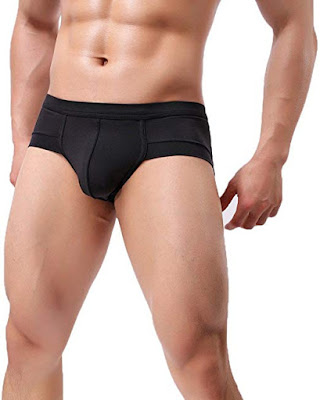It is perhaps the most underappreciated and overlooked piece of clothing too and I wonder how many men think about where they came from, how did they come to be as they are now, how did they achieve this immovable status in the regular man's wardrobe?
The underwears what most men will perceive now couldn't be any more vastly different than how it existed in the past. However, even during the primal years of man, history records the existence of underwear and back then it would be the only piece of clothing that men would wear or had evolved to wear.
The underwears what most men will perceive now couldn't be any more vastly different than how it existed in the past. However, even during the primal years of man, history records the existence of underwear and back then it would be the only piece of clothing that men would wear or had evolved to wear.
A simple and modest piece of cloth draped across the waist serving its purpose to uphold the modestic values that existed even back then, the sense of shame and modesty propelled the ancient man to take measures to ensure their genitals remained out of view thus making way for measures to be taken often in the form of simple cloth called Loincloth wrapped across the waist. However, with the passage of time this simplicity evolved into something more robust and more practical.
Different cultures had their own implementations of the underwear but the concept always remained the same. In the Mediterranean, more specifically in Egypt, this piece of clothing which was tied from the front, made of linen and was often the only piece of clothing owned by men was called the "Schenti" and could be seen in their earliest of depictions of the Egyptian Empire. Other cultures had different adaptions of the underwear, for example ancient cave paintings in south America showed paintings of men wearing underwear that were open from the sides and covered their front and rear portions.
Different cultures had their own implementations of the underwear but the concept always remained the same. In the Mediterranean, more specifically in Egypt, this piece of clothing which was tied from the front, made of linen and was often the only piece of clothing owned by men was called the "Schenti" and could be seen in their earliest of depictions of the Egyptian Empire. Other cultures had different adaptions of the underwear, for example ancient cave paintings in south America showed paintings of men wearing underwear that were open from the sides and covered their front and rear portions.
In the Medieval age however the underwear slowly transitioned into trousers with flaps that could be unfastened to allow men to urinate. This was truly revolutionary back in the day. What began its life as a trouser, slowly transitioned into an underwear, an element of Medieval attire that was irreplaceable for men.
Over the years and as with everything else, the underwear has seen its evolution. It has maintained its irreplaceable status and crucial presence for men but has transitioned from something very uncomfortable, beginning its journey as pieces of leaf sewed together to other shapes and sizes serving the same purpose. Apart from ensuring the groin area remains dry and sweat is absorbed properly, the underwear also adds comfort and fulfills its most innate purpose, to ensure modesty.
Over the years and as with everything else, the underwear has seen its evolution. It has maintained its irreplaceable status and crucial presence for men but has transitioned from something very uncomfortable, beginning its journey as pieces of leaf sewed together to other shapes and sizes serving the same purpose. Apart from ensuring the groin area remains dry and sweat is absorbed properly, the underwear also adds comfort and fulfills its most innate purpose, to ensure modesty.
However, the underwears most men would recognize today, called the brief traces its roots back to Chicago on the 19th day of January in 1935 when the first men's brief was produced and sold. It was made of cotton, was soft, gentle and had an elastic band across the waist making it by far the most comfortable and revolutionary evolution mens underwear have seen.
Since then, mens underwear have mostly been an evolution of the 1935 "Tightey Whiteys". Certain advancements in clothing materials have added to the comfort but the shape has mostly remained the same. Certain athletic style briefs have hit the shelves which are lighter and absorb moisture with more efficiency as their non athletic counterparts.
Other variations include but are not limited to trunk briefs which are essentially shortened versions of shorts and midway briefs which are by far the longest iteration of modern day briefs sitting ending just above the knees but even with thousands of years of its existence, the men underwears have found itself to always remain the most crucial piece of clothing; any man can possess and its purpose has always remained the same making it the most underappreciated and overlooked piece of garment a man possesses.

No comments:
Post a Comment